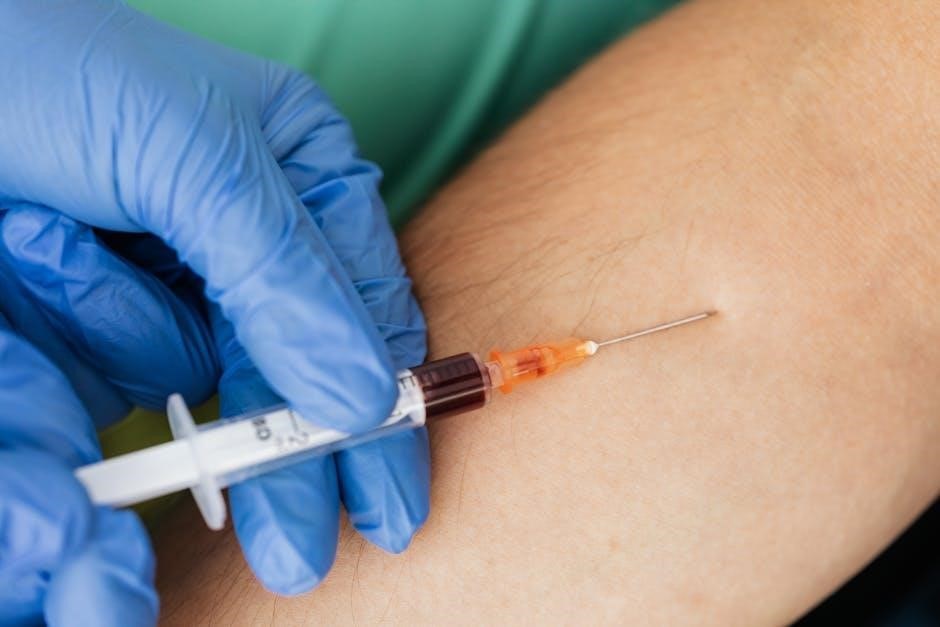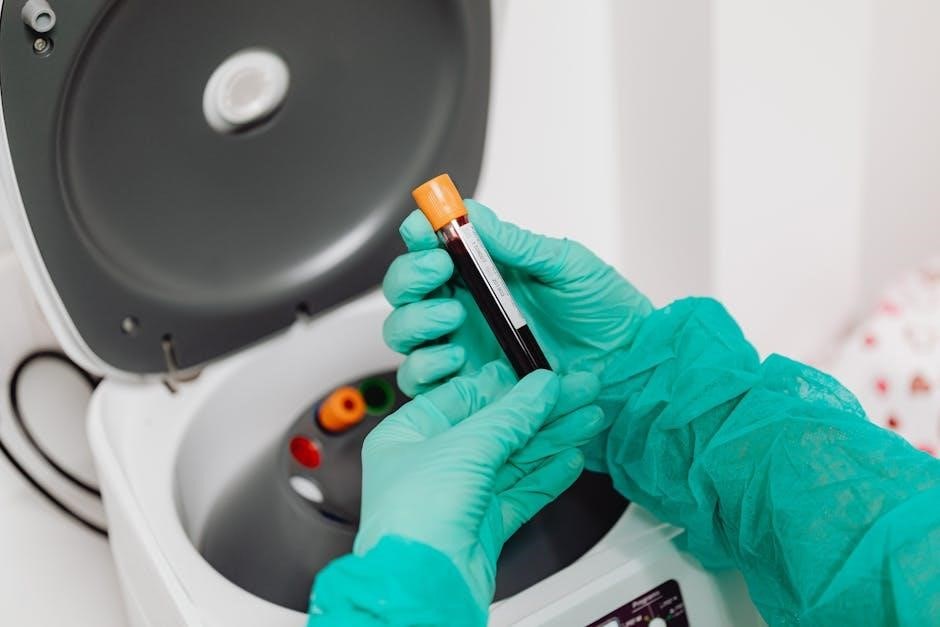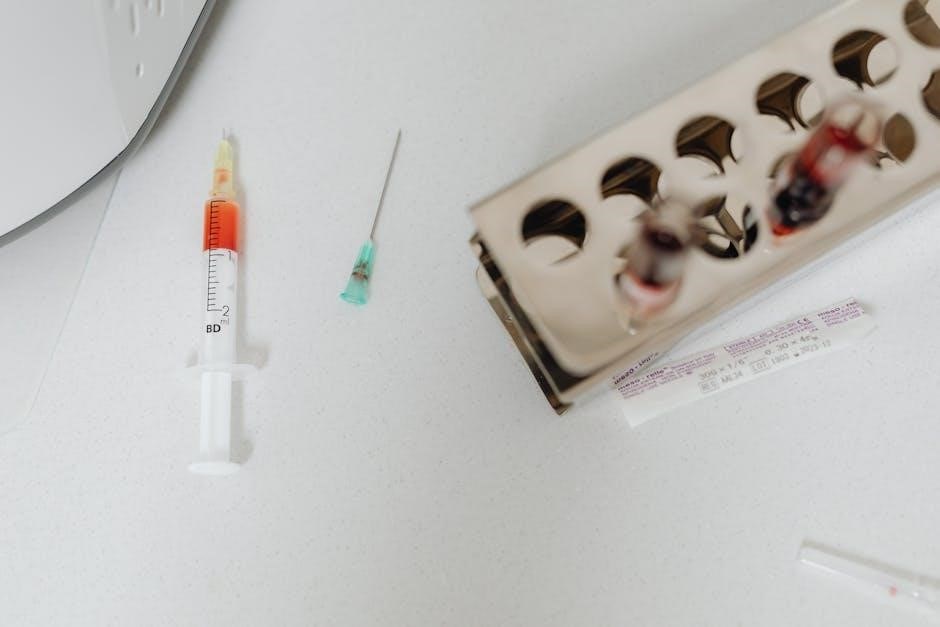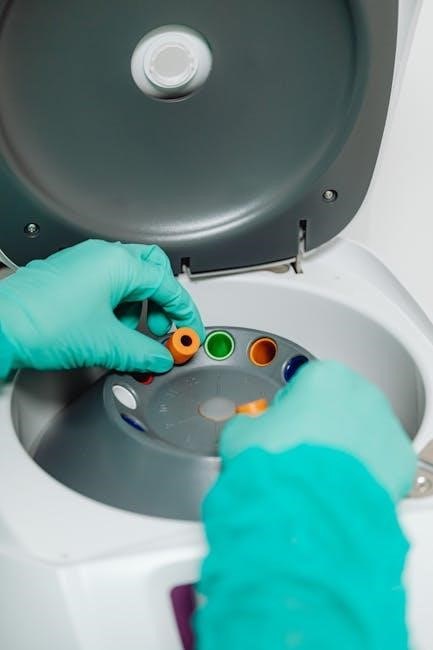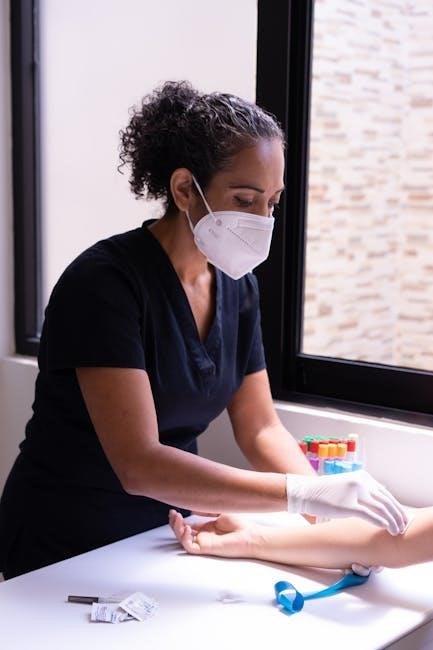The 1972 edition, by A.C. Bhaktivedanta Swami Prabhupada, offers a complete Bhagavad-gita experience, readily available as a free PDF download for devoted readers.
Considered Hinduism’s central text, akin to the Bible for Christians, the Gita’s English versions attract diverse seekers, especially during events like the Maha Kumbh Mela.
Scholars, like Prof. Kev Nair, aim to make this philosophical text accessible, while resources like Krishnapath.org provide transliteration and Sanskrit-English equivalents.
Historical Context and Origins
The Bhagavad Gita, originating as part of the epic Mahabharata, dates back over five thousand years. Its narrative unfolds on the battlefield of Kurukshetra, a pivotal moment in ancient Indian history. As It Is, the text presents a dialogue between Prince Arjuna and Lord Krishna, exploring dharma, duty, and the nature of reality.
The 1972 edition, translated by A.C. Bhaktivedanta Swami Prabhupada, represents a specific interpretation aiming for fidelity to the original Sanskrit. This version’s accessibility, particularly through PDF formats, broadened its reach globally. The text’s enduring relevance is highlighted by its continued interest during spiritual gatherings like the Maha Kumbh Mela, demonstrating its timeless wisdom.
Its origins are deeply rooted in Hindu tradition, serving as a foundational scripture for centuries, influencing philosophical and spiritual thought.
Significance of the 1972 Edition
A.C. Bhaktivedanta Swami Prabhupada’s 1972 edition of the Bhagavad Gita As It Is holds immense significance for its commitment to presenting the text “as it is,” without extensive personal interpretation. This approach aimed to offer a direct connection to the original Sanskrit, making it accessible to a wider audience through English translation.
The availability of this edition as a free PDF download dramatically increased its distribution, fostering a global community of readers. It became a cornerstone of the Hare Krishna movement, influencing Western thought and spiritual seekers. The comprehensive nature of the edition, including detailed explanations and Sanskrit-English equivalents, further enhanced its value.
Its impact continues today, evidenced by its enduring popularity and accessibility online.

Understanding the Text
The Bhagavad Gita As It Is, available as a PDF, requires understanding Prabhupada’s translation philosophy and its context within Hindu scriptures and Western influence.
The Role of A.C. Bhaktivedanta Swami Prabhupada
A.C. Bhaktivedanta Swami Prabhupada was instrumental in bringing the Bhagavad Gita As It Is to a Western audience, publishing the original 1972 edition. His work wasn’t merely translation; it was a presentation of the text’s spiritual depth, aiming for authenticity.
Prabhupada’s dedication led to the widespread availability of the Gita, including the convenient PDF format, allowing global access to its teachings. He emphasized presenting the scripture “as it is,” without personal interpretation, a core tenet of his translation philosophy.
This approach aimed to convey Krishna’s message directly, fostering a deeper understanding of concepts like Karma Yoga, Bhakti Yoga, and Jnana Yoga. His efforts significantly impacted the understanding and reception of the Bhagavad Gita worldwide.
Translation Philosophy: “As It Is”

The phrase “As It Is” defines A.C. Bhaktivedanta Swami Prabhupada’s unique translation approach to the Bhagavad Gita. This wasn’t about imposing a new interpretation, but faithfully rendering the Sanskrit text into English, preserving its original meaning. The readily available PDF version reflects this commitment;
Prabhupada strived to avoid injecting personal opinions or sectarian viewpoints, aiming for a direct transmission of Krishna’s message; This philosophy distinguishes his work from other translations, offering a purer, unadulterated experience for readers seeking authentic understanding.
The “As It Is” principle ensures the Gita’s core concepts – Karma, Bhakti, and Jnana – are presented without distortion, allowing individuals to connect directly with the scripture’s wisdom.
Comparison to Other Translations
While numerous English translations of the Bhagavad Gita exist, Prabhupada’s “As It Is” edition stands apart due to its unwavering fidelity to the original Sanskrit. Many translations offer interpretations influenced by the translator’s philosophical leanings, potentially altering the core message.
The PDF version of Prabhupada’s work includes Sanskrit verses alongside transliteration and word-for-word English equivalents, enabling readers to verify the translation’s accuracy. This contrasts with versions that prioritize readability over literal precision.
Scholarly analyses often highlight the distinctiveness of Prabhupada’s approach, emphasizing its devotional focus and commitment to presenting the Gita as a direct path to spiritual realization, making it a unique resource.

Accessing the English PDF Version
Download the original 1972 Bhagavad Gita As It Is PDF from the Internet Archive, Krishnapath.org, or other online sources for convenient study.
Where to Download the Bhagavad Gita PDF
Obtaining the Bhagavad Gita As It Is in English PDF format is remarkably accessible in today’s digital landscape. Several reputable online platforms offer this sacred text for free download. The Internet Archive stands out as a primary resource, providing a digitized version of the original 1972 edition, complete at 521.2MB in size.
Alternatively, Krishnapath.org is a dedicated website offering not only the PDF but also supplementary materials like English transliteration and detailed Sanskrit-English equivalents, enhancing the study experience. These resources ensure devotees and scholars alike can readily engage with Prabhupada’s translation. Furthermore, a simple web search will reveal numerous links to downloadable versions, though verifying the source’s authenticity is always recommended.
Internet Archive Availability
The Internet Archive serves as a crucial digital repository for the Bhagavad Gita As It Is, offering the original 1972 edition in a readily accessible PDF format. Users can directly access and download the 521.2MB file through their in-browser book reader, though JavaScript must be enabled for optimal functionality.
This platform provides a reliable source for the complete text, ensuring preservation and widespread availability of Prabhupada’s translation. However, it’s noted that the Archive’s book reader may encounter issues if JavaScript is disabled within the user’s browser settings. The availability on the Internet Archive underscores the commitment to open access and the enduring relevance of this spiritual classic, allowing global readership.
Krishnapath.org Resources
Krishnapath.org presents itself as a valuable online destination for those seeking the Bhagavad Gita As It Is in English, offering free downloadable original books. The website distinguishes itself by providing not only the complete text in PDF format but also supplementary materials designed to deepen understanding.
These resources include English transliteration alongside word-for-word Sanskrit-English equivalents, facilitating a closer examination of the original verses; This detailed approach caters to both beginners and seasoned scholars, enabling a nuanced exploration of the text’s meaning. Krishnapath.org aims to provide a comprehensive learning experience, fostering a deeper connection with the Gita’s timeless wisdom.
Key Concepts within the Bhagavad Gita
The Gita explores Karma Yoga, Bhakti Yoga, and Jnana Yoga – paths to liberation – accessible through the English PDF, revealing profound spiritual truths.
Karma Yoga: The Path of Action
Karma Yoga, detailed within the Bhagavad Gita As It Is – easily accessed via English PDF versions – emphasizes selfless action performed as a sacrifice, devoid of attachment to results. This path, crucial to spiritual growth, advocates dedicating all actions to a higher power.
Chapter 4, Verse 26, within the PDF, specifically highlights the importance of sacrifice in spiritual life, illustrating how dedicated action purifies the heart. The Gita clarifies that true freedom isn’t avoiding action, but acting without selfish desire.
Studying the English translation, available for download, reveals how disciplined action, free from the three afflictions, leads to redemption and ultimate liberation. Understanding this concept is central to the Gita’s teachings.
Bhakti Yoga: The Path of Devotion
Bhakti Yoga, profoundly explored in the Bhagavad Gita As It Is – conveniently available as an English PDF – centers on loving devotion to the Divine. This path emphasizes cultivating a personal relationship with God through worship, prayer, and surrender.
The Gita, in its English translation for download, reveals that sincere devotion transcends ritualistic practices. It’s about heartfelt connection and unwavering faith. This path is accessible to all, regardless of social standing or intellectual capacity.

Resources like Krishnapath.org offer insights into understanding this core principle. The PDF version allows for detailed study, revealing how selfless love and devotion ultimately lead to liberation and eternal bliss, a central tenet of Hindu philosophy.
Jnana Yoga: The Path of Knowledge
Jnana Yoga, the path of knowledge, is meticulously detailed within the Bhagavad Gita As It Is, readily accessible as an English PDF for dedicated study. This discipline emphasizes discerning the true nature of reality through intellectual inquiry and self-realization.
The Gita, in its translated English form available for download, explains that true knowledge isn’t merely intellectual understanding, but a direct experiential realization of the self’s connection to the Divine. It requires rigorous self-discipline and contemplation.
Resources offering Sanskrit-English equivalents, like those found on Krishnapath.org, aid in deeper comprehension. Studying the PDF reveals how this path, though challenging, leads to liberation by dissolving ignorance and revealing the eternal truth.

The Bhagavad Gita’s Influence
The Bhagavad Gita, widely available as an English PDF, profoundly impacts Hinduism and Western thought, attracting interest even during events like the Maha Kumbh Mela.
Its teachings resonate globally, inspiring philosophical discussions and spiritual seekers alike.
Relevance to Hinduism

The Bhagavad Gita holds paramount significance within Hinduism, often described as its most important scripture. Comparable to the Bible’s role in Christianity, the Gita encapsulates core Hindu philosophies and provides a comprehensive guide to spiritual life.
The readily accessible English PDF versions, particularly the 1972 edition by Prabhupada, have broadened its reach, allowing a wider audience to engage with its teachings. For Hindus, it’s not merely a text but a foundational source of dharma, offering insights into karma, bhakti, and jnana yoga.
During sacred gatherings like the Maha Kumbh Mela, interest in the Gita’s English translations surges, demonstrating its enduring relevance and the desire for spiritual understanding amongst devotees.
It’s considered a distillation of the Upanishads, presenting complex philosophical concepts in a narrative format, making it both accessible and profoundly insightful.
Impact on Western Thought
The Bhagavad Gita, especially through accessible English PDF translations like Prabhupada’s 1972 edition, has profoundly impacted Western philosophical and spiritual landscapes. Melvyn Bragg’s discussions highlight its growing recognition as a significant world text.
Its concepts of selfless action (Karma Yoga), devotion (Bhakti Yoga), and knowledge (Jnana Yoga) resonated with thinkers seeking alternatives to materialistic worldviews. The Gita’s emphasis on inner transformation and universal consciousness influenced figures across various disciplines.
The availability of the text in English facilitated its study and integration into Western psychology, literature, and art, fostering cross-cultural dialogue and inspiring new perspectives on life’s purpose.
It offered a unique perspective on ethics, duty, and the nature of reality, challenging conventional Western thought and enriching intellectual discourse.
The Gita and the Maha Kumbh Mela
The Bhagavad Gita holds immense significance for devotees participating in the Maha Kumbh Mela, a sacred pilgrimage. The increased interest in English versions, including readily available PDF formats, demonstrates its accessibility to a wider audience during this spiritual gathering.
As millions converge in Prayagraj, seekers actively engage with the Gita’s teachings, seeking guidance on dharma, karma, and liberation. The text’s wisdom provides a framework for understanding the rituals and philosophies central to the Mela.
The PDF version allows for convenient study and contemplation amidst the Mela’s vibrant atmosphere, fostering deeper spiritual connection and personal reflection. It serves as a portable guide for navigating the complexities of faith and devotion.
The Gita’s relevance is amplified during this auspicious time, inspiring devotees on their spiritual journeys.
Studying the Bhagavad Gita
PDF versions facilitate study, offering Sanskrit-English equivalents and chapter analyses (like Chapter 4, Verse 26). Plain English interpretations aid comprehension.
Resources like Krishnapath.org provide downloadable texts for focused learning.
Sanskrit-English Equivalents
The availability of Bhagavad Gita As It Is in English PDF format greatly enhances the study process, particularly when coupled with Sanskrit-English equivalents.
These equivalents, often presented alongside the transliterated Sanskrit verses, allow readers to directly correlate the original wording with its English translation.
Resources like Krishnapath.org specifically highlight this feature, providing a word-for-word understanding that transcends simple translation.
This detailed approach is invaluable for those seeking a deeper engagement with the text, enabling a nuanced comprehension of Prabhupada’s interpretations.
By examining the Sanskrit roots, students can unlock layers of meaning often lost in paraphrased versions, fostering a more authentic connection to the Gita’s wisdom.
Chapter-by-Chapter Analysis (Example: Chapter 4, Verse 26)
Accessing the Bhagavad Gita As It Is in English PDF format facilitates detailed, chapter-by-chapter study, exemplified by an examination of Chapter 4, Verse 26.
This verse, as explored in various online resources, emphasizes the significance of yajna (sacrifice) in spiritual advancement, particularly for those dedicated to self-realization.
Prabhupada’s commentary, readily available within the PDF, clarifies that sacrifice doesn’t necessarily imply ritualistic offerings, but rather the dedication of actions to Krishna.
Understanding this nuance is crucial, as it reveals the core principle of Karma Yoga – performing duties without attachment to results.
Such analysis, aided by the PDF’s accessibility, allows readers to progressively unravel the Gita’s profound teachings and apply them to daily life.
Plain English Interpretations
The availability of the Bhagavad Gita As It Is in English PDF format allows for simplified interpretations, making its complex philosophy accessible to “everyday folk.”
Many resources aim to minimize Sanskrit terminology, presenting the Gita’s wisdom in relatable language, free from overly academic jargon.
These interpretations focus on the core message: liberation from suffering through selfless action, devotion, and knowledge.

The PDF format enables readers to cross-reference Prabhupada’s original commentary with these plain English explanations, fostering a deeper understanding.
Ultimately, these accessible versions empower individuals to apply the Gita’s timeless principles to navigate life’s challenges and achieve inner peace.

Resources for Further Study
Krishnapath.org offers downloadable books, including the Bhagavad Gita As It Is PDF, alongside scholarly analyses and online resources for deeper exploration.
The Internet Archive provides access to the original 1972 edition, facilitating comparative study and research.
Online Resources and Websites
Numerous websites cater to those seeking the Bhagavad Gita As It Is in English, particularly the PDF version. Krishnapath.org stands out, providing not only a free downloadable copy of the original 1972 edition but also supplementary materials like Sanskrit-English equivalents and transliterations.
The Internet Archive is another invaluable resource, offering access to the complete text through its in-browser book reader, though JavaScript must be enabled for optimal functionality. This allows for convenient online study.
Beyond direct downloads, various platforms host discussions and interpretations of the Gita, fostering a community of learners. Exploring these sites can enrich understanding and provide diverse perspectives on Prabhupada’s translation.
Remember to verify the source and edition when downloading to ensure authenticity and alignment with the “As It Is” philosophy.
Scholarly Interpretations and Analyses
While the “As It Is” edition presents Prabhupada’s interpretation, numerous scholarly analyses offer alternative perspectives on the Bhagavad Gita. Examining these alongside the PDF version enhances comprehension. Melvyn Bragg’s discussions with experts, available through various media outlets, provide a broad overview of the text’s contents and influence.
Researchers explore the Gita’s historical context, philosophical underpinnings, and impact on both Hinduism and Western thought. These analyses often delve into the nuances of Sanskrit terminology and translation choices.
Comparing scholarly viewpoints with Prabhupada’s “As It Is” approach encourages critical thinking and a deeper appreciation for the Gita’s complexity. Understanding differing interpretations is key to informed study;

Such explorations reveal the text’s enduring relevance and adaptability across cultures and time periods.
































































